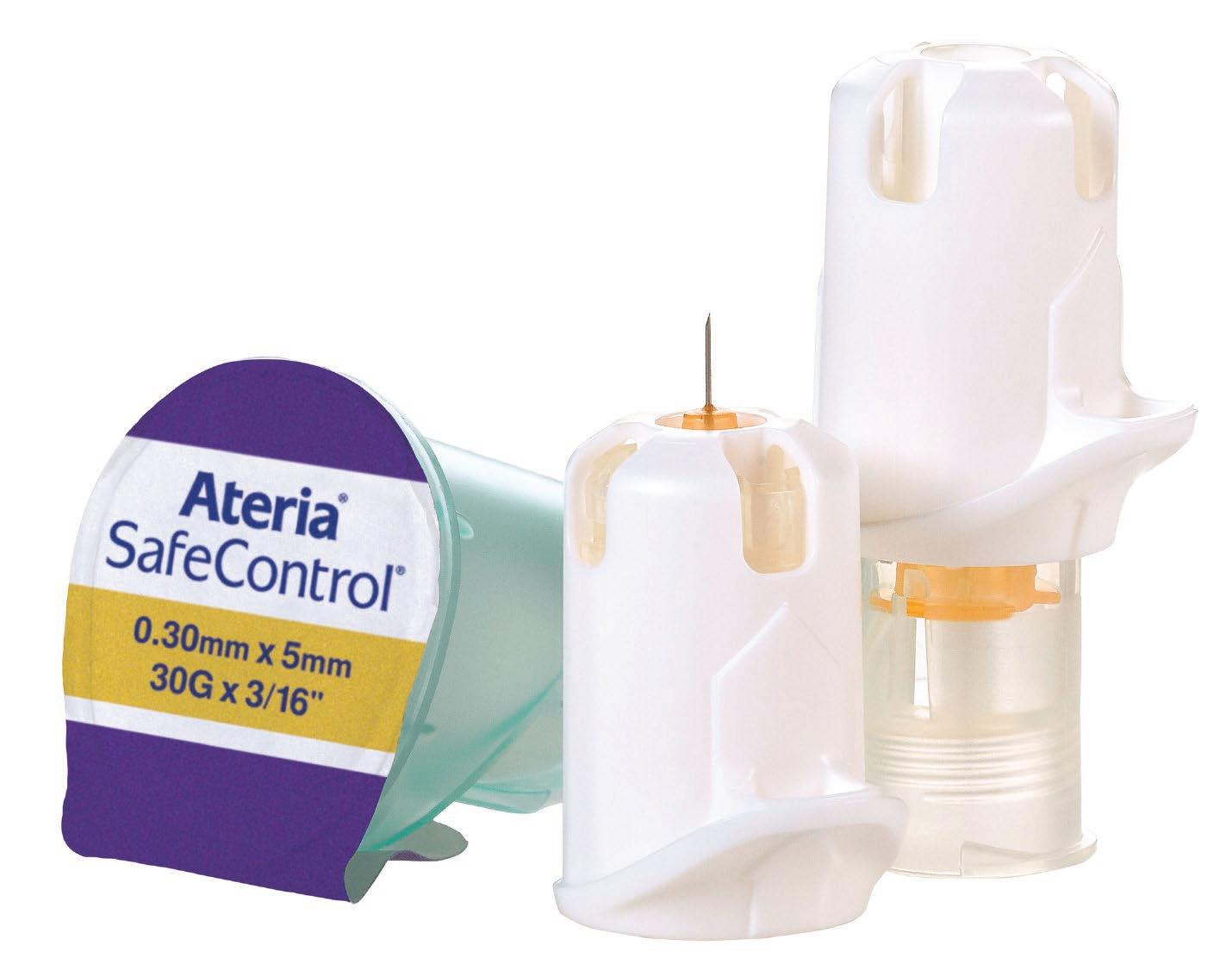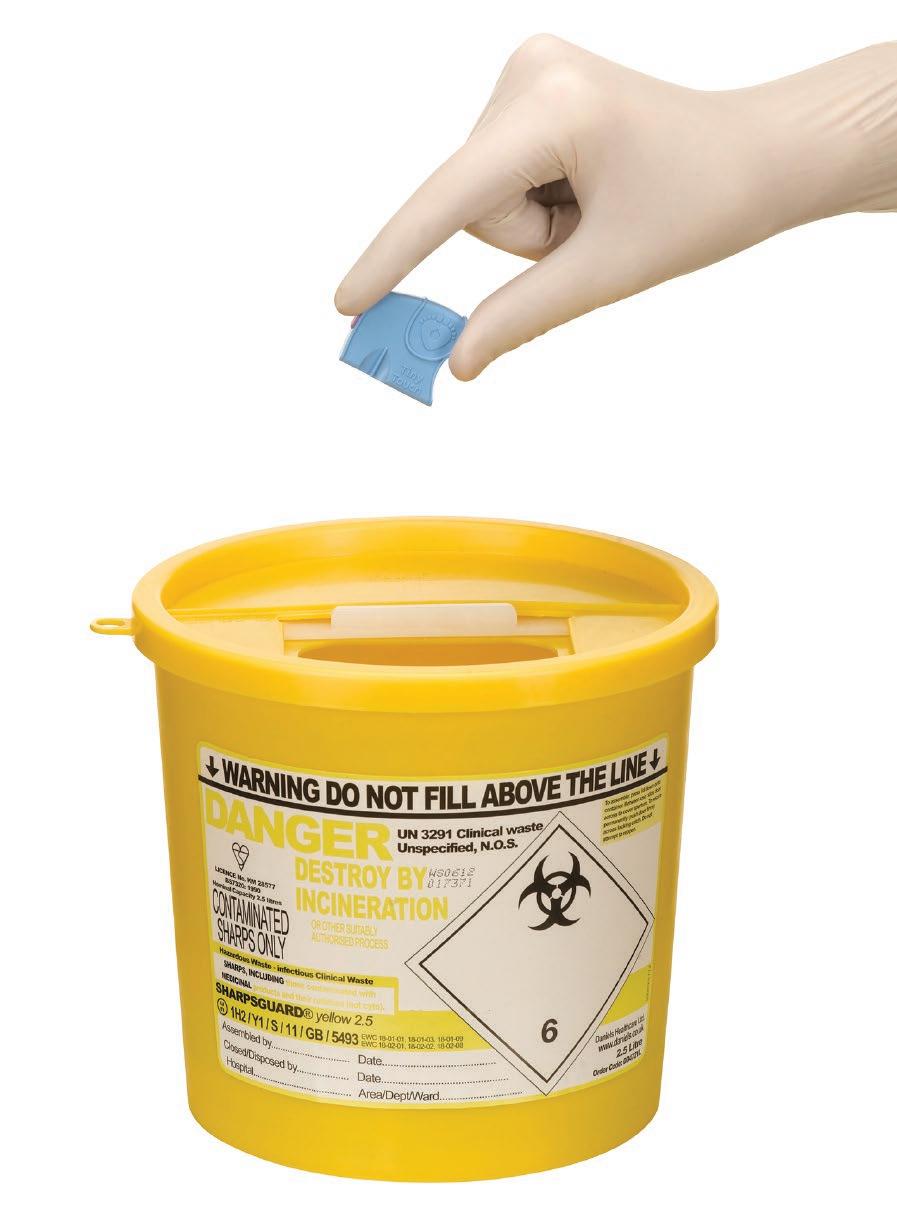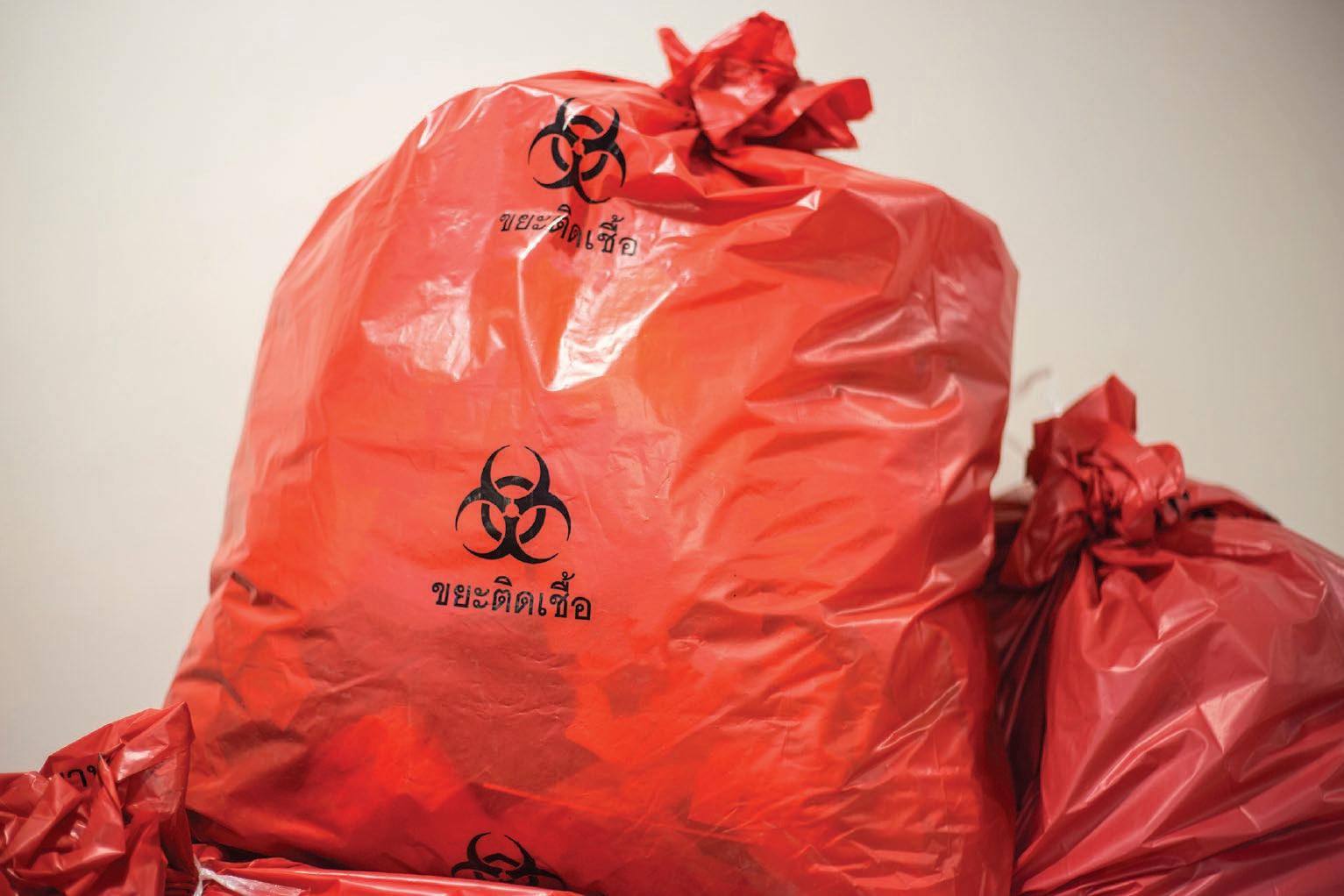
5 minute read
Safety and Control at the Heart of Good Practice
from Hospital Reports – Preventing Needle Stick Injuries and the Role of Safety Devices – Owen Mumford
Peter Dunwell, Medical Correspondent
A well-controlled process will also be a safer process and that should be the objective of all parties in healthcare
In her article, Camilla Slade set the scene for the regulations that govern handling and using sharps and needles. Employers are always under an obligation to ensure the safety of staff, the more so when those staff work in potentially hazardous environments with potentially hazardous devices. There are around 100,000 needlestick injuries reported every year in the UK and many more that go unreported 37 . Safety demands processes that have been designed with safety in mind and procedures designed to avoid risk. So, what can be done to avoid sharps and needlestick injuries for healthcare workers?
Keeping People Safe When Using Needles and Sharps
The BMJ, in its article ‘Reducing the risk of needlestick injuries in hospital’ 50 summarises the problem of disposal; “After performing procedures involving one or multiple sharp pieces of equipment or ‘sharps’ there is often no quick and accessible sharps bin for their safe disposal. Instead one must transport this equipment, potentially infected with hazardous blood products, away from the bedside to bins situated elsewhere (e.g. end of bays), risking injury and exposure to others en route.”
NHS Resolution 51 , the organisation handling claims against the NHS, adds some specific red flags that can identify problems in processes and procedures using needles; “… non-compliance with standard infection control precautions; inadequate disposal of clinical waste; overfull sharps bins; not using safer sharps and not using Personal Protective equipment.” Also, the regulations state that all employers are required, under existing health and safety law, to ensure that risk of sharps injuries from needles are adequately assessed, and that appropriate preventative and control measures are in place. That is a theme taken up in another quarter. A large number of healthcare workers are members of the UNISON Trade Union and so it’s worth checking their booklet, ‘Managing and preventing sharps injuries’ 52 . It says; “All employers must as far as is reasonably practical, ensure the health and safety of both their employees and the public… As part of this duty they must carry out a careful examination of the workplace to identify what hazards could cause harm, assess the likelihood of harm occurring, and then implement measures to eliminate so far as reasonably practicable, or otherwise minimise the risks associated with such hazards...”
Perhaps because of claims and their cost, the NHS has developed detailed rules around this area. The guidance that it offers, ‘How should I dispose of used needles or sharps?’ 53 , sets out some clear guidelines as do a number of sources. A summary of how to stay safe might seem obvious, but sometimes the obvious bears repetition. • Safer sharps should be used where available; • Avoid leaving sharps lying around; • Avoid re-sheathing any used needles; • Do not bend/break needles before discarding them; • Place contaminated sharps in disposal containers approved to BS 7320:1990, immediately after use. There is a pattern emerging here: a pattern that might best be summed up in NHS Greater Glasgow and Clyde ‘Safe Use of Sharps in Healthcare Policy & Guidance for Managers and Staff’, that the employer’s obligation is, “To protect employees and others from the hazards inherent in the use of clinical sharps and to ensure that all activities involving a clinical sharp are conducted in a manner that does not jeopardize employee or other persons health and safety.”
A Safe and Controlled Injection Process
Notwithstanding the importance of regulations, disposal and treatment of injuries, at the heart of this issue is the process of injection and the importance of safety and control to ensure that
Owen Mumford: Ateria ® SafeControl ® Safety Pen Needle - 0.30mm x 5mm (active device)
the process is well managed using the most appropriate equipment. That principle is important enough for the World Health Organisation (WHO) International Council of Nurses to have published ‘Giving safe injections’ 54 in which the factors for safety are set out: • Eliminate unnecessary injections; • Use sterile injection equipment and sharps; • Prepare and give injections without contamination; and • Dispose of sharps to prevent re-use and harmful waste. Control might be well illustrated by the Premier paper ‘Safe Injection Practices’ 55 which opens with; “Safe injection practices include measures taken to perform injections in a manner that is safe for patients and providers… Healthcare should not provide a pathway for transmission of bloodborne viruses to patients or providers.” Having an agreed and understood injection process ensures the control on which safety depends. That controlled environment is also cited in the paper ‘Needlestick’ by Kevin C King and Ronald Stormy 56 which states that, “Although many advances have been made in the development of safer needles and sheathing devices, these devices are not failsafe and only work in settings where the work environment is constantly monitored. Studies, however, do show that the routine use of these needleless systems leads to a marked decrease in needlestick injuries.”
Control is recognised as a very important component in the management of safe injection processes with Medsafe ‘5 Steps to Take Following a Needlestick and How to Prevent an Injury in the Workplace’ 57 telling us that employers should, “Implement the use of engineering controls to reduce needlestick injuries.” As the first of a comprehensive list of control steps.
Safety by Design
The other significant way in which safety can be built into the injection process is in the design of the devices - the hypodermic syringes and needles themselves. Springboard ‘An introduction to needlestick protection and safety syringes’ 58 explains, “… the hazard is most effectively handled by engineering solutions which separate those at risk from the sharps.”
Clinical Services Journal ‘Safer Hypodermic Syringes’ 59 makes the point that, “Over 70% of nurses surveyed said they preferred syringes where hands and fingers stay behind the needle area when activating the safety mechanism, and where the syringe is permanently disabled after the safety mechanism is activated. Over 60% required the safety feature to be integral to the design of the syringe.” That’s the human side of safety but the article also addresses the wider issues, “Safety syringes help protect staff from the health risks of needlestick injuries, and the Trust from damages claims.”
As in many procedures, safety when administering an injection is best assured through a combination of safe practices, a controlled process and equipment where safety is designed in.






